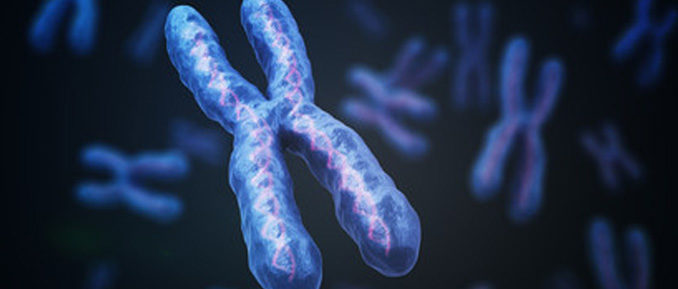
The field of epigenetic research has been making huge strides in identifying the mechanisms involved in controlling how genes are expressed. A lot of effort is put into studying the importance of the genetic code documented in cells, but also of the structure of the chromatin supporting it.
As the protein-based infrastructure surrounding DNA, chromatin controls how exposed the DNA is. No matter how critical the genetic sequence may be, it won’t be properly transcribed into RNA and then into functional proteins unless it is made physically accessible to the cellular machinery that makes this happen. The chromatin must accessible to expose the DNA.
The human genome can undergo a lot of changes over a lifetime, and those changes can also alter gene expression. Many studies have identified heterochromatin—or the highly coiled and densely packed sections of DNA—as a mechanism thought to be tasked with policing the genome in order to silence the genes that may cause disease. But as Keith Maggert and his team at the University of Arizona Cancer Center pinpointed, heterochromatin is not without fail.
“People thought heterochromatin was good at its job,” said Maggert when asked about his team’s finding. “But heterochromatin makes mistakes, and so it slips from time to time, flickering on and off constantly. Each time it drops the ball, we’re at risk, and certain environmental conditions can lead to increased instability.”
Among the biological observations they made, Maggert and his team examined position effect variegation (PEV) —or variable stripe patterns that result in part from the unique positioning of heterochromatin and euchromatin in ways that silence some genes—in Drosophila. Very little has been known about PEV beyond whether or not the genes were ultimately silenced. But as the researchers leveraged their observations alongside novel mathematical modeling methods, new insights emerged.
“We designed a system to track the history of silencing (flickering) throughout an organism’s life,” Maggert went on to note. “Imagine a game of pinball. Before, we could only see if the ball finally went in the hole, but we couldn’t see all the interesting stuff – the ball bounce against the weird bumpers, what path it took, what it did before reaching that final state. The flickering on and off was a total mystery no one expected.”
What Maggert and his team found was that heterochromatin is unstable—to varying extents across an entire spectrum of strength. Over the course of development, epigenetic mechanisms like DNA methylation and histone modifications can be turn genes on and off several times. We’ve seen previously how sometimes chromatin structure can be seemingly erased during cell division before then being restored in development, but Maggert’s data alluded to a chromatin history of which silencing is stronger or weaker than other changes.
Further characterization is certainly needed, but Maggert and his team brought up some sophisticated factors that must be considered during epigenetic research. For example, it is common and tempting to focus the discussion of the silencing of a particular section of heterochromatin, and consider exclusively that portion of heterochromatin. However, the effects of both neighboring genes and sections of chromatin must also be considered, since it is really the delicate interplay of the entire genome that actually informs the cell.
Source: K.A. Maggert et al. (2019). Monitoring of switches in heterochromatin-induced silencing shows incomplete establishment and developmental instabilities.PNAS 65(11)
Reference: Mikayla Mace. Renegade Genes Caught Red Handed Univ. of Arizona News 16 Sep. 2019. Web.

